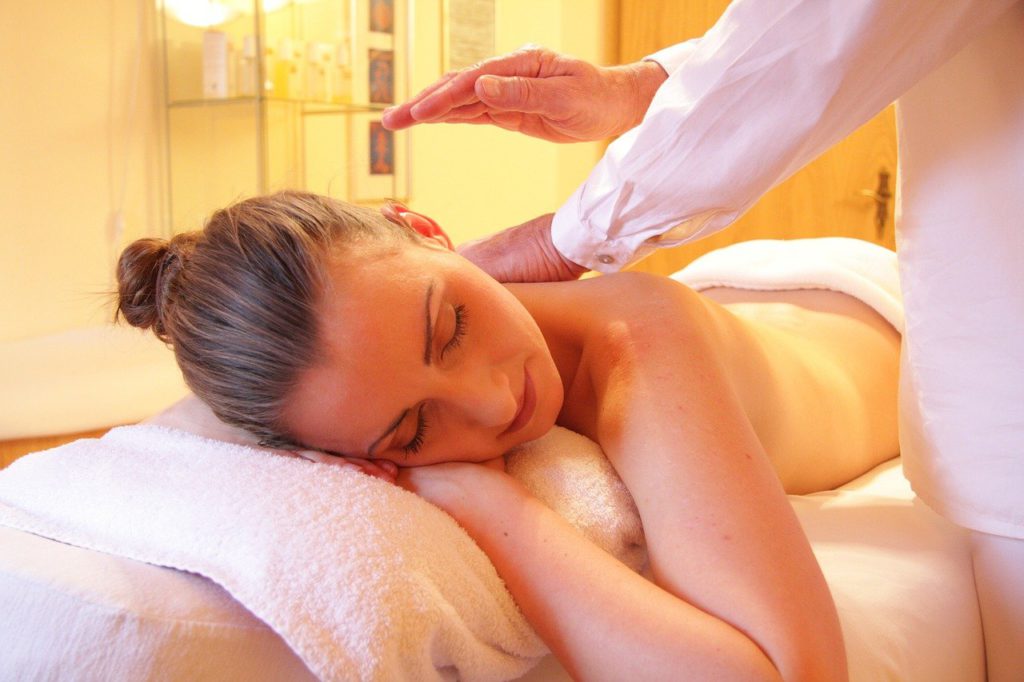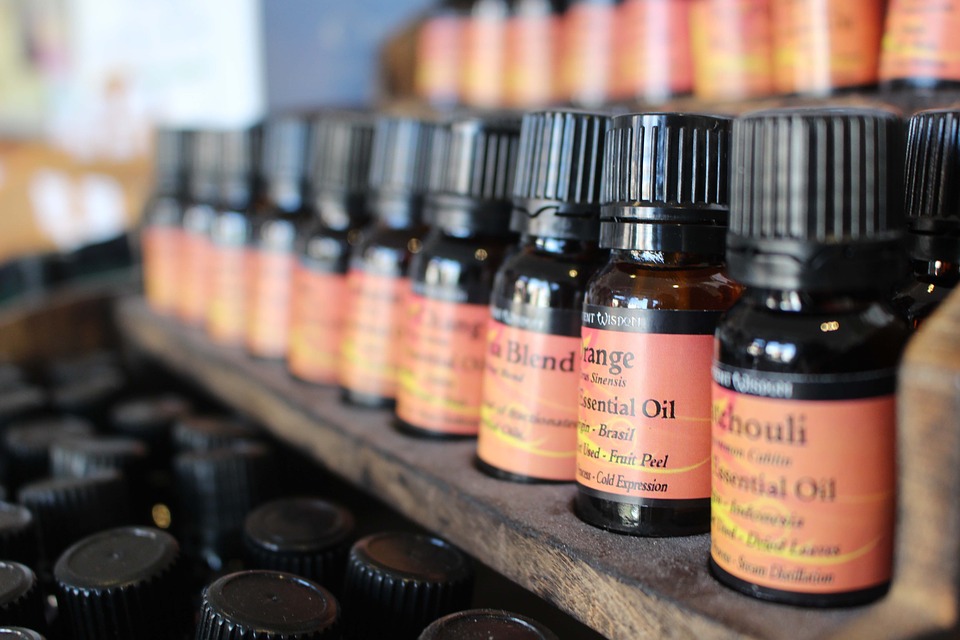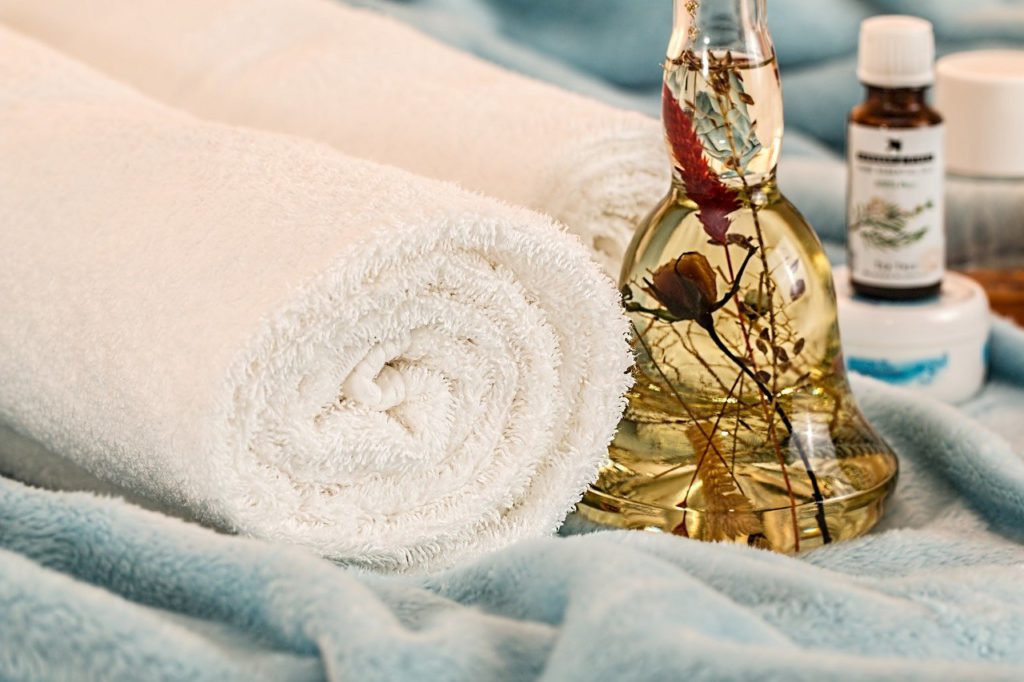Aromatherapy massage is often chosen as a more relaxing massage using the scent of the oils to do all the hard work. The massage itself is usually slower with the intention of melting away emotional stresses and promoting the feeling of calm. However as we use traditional Swedish massage techniques these can be adapted to be relaxing, energising, stress relieving… All Newhaven aromatherapy massage treatments come with the benefits of our wonderful pre blended oil options.

Aromatherapy massage works on the physical aspect of the body by manipulating different muscles. It also has an effect on a psychological level too, as the smell of the oils enters the limbic system via the nose; our emotions and autonomic and central nervous systems are affected.
The properties that the essential oils possess have even more of an effect once the very small molecules are absorbed through the skin. They affect all systems of the body: emotional, cardiovascular, digestive, immunological, respiratory, lymphatic, urinary, reproductive, dermatological, muscular and skeletal.
Newhaven aromatherapy massage: What to expect
On arrival a consultation will be carried out to find out about your health and well being; this will highlight any focus areas as well as deciding how to adapt the treatment specifically to your needs. It also allows you to ask any questions you may have as well as allowing the therapist to determine whether a treatment is suitable. (Treatment may be unsuitable due to some medical conditions, please see contraindications page for more details).
The therapist will discuss with you what blend of oils will suit you best, the essential oils chosen will depend upon your needs for that day. and should leave you with a sense of well being.
At the end of the Newhaven aromatherapy massage you will be able to dress and then take a seat to have some water before going back out into the world.
It is important after using photosensitive essential oils on the skin to avoid being in direct sunlight or using a sunbed as this could lead to burning or sensitisation.
Where do essential oils come from?
Essential oils are found in raw materials such as flowers, leaves, herbs, fruit, peel, berries, bark, resin, wood, seeds, roots, grasses.

There are several ways in which the essential oils are extracted from the raw material:
Distillation
Most essential oils are extracted using this method e.g. lavender and peppermint, there are few different processes can be used but all involve water being heated to create steam which carries the essential oil chemicals, the steam is cooled and the oil separated.
Steam distillation brings steam into the distillation unit passes it through the raw plant material where the oil evaporates. The steam and oil are taken into a condenser where they are cooled and turned back into a liquid. The oil floats to the top of the water and is collected. This process can be compared to a vegetable steamer that many people have in their kitchens today. It works better on leafy material than it does on woods, roots and seeds.
Hydrodistillation sees the plant material being submerged in water and then heated; it is a very old method which carries the risk of the water running dry, being overheated or the material burnt and so is better for tougher parts of the plant such as roots and nuts.
This is simple for most oils but there are exceptions for example ylang ylang needs to be distilled several times and it takes about 8 million jasmine flowers to make 900g of oil. A by-product of the process is created from the re-condensed water which can also be sold in some cases such as lavender water and rose water.
Expression
This method is also known as cold pressing, it is traditionally used for extracting oils from the rind of citrus fruits. The peel used to be squeezed by hand and the oil collected on a sponge, more commonly the ground or chopped rinds are extracted by pressing from machines. Citrus oils collected in this way are often more vibrant than those that are distilled.
The result of the pressing leaves a mix of water and oil which will then separate. Large quantities of oil can be collected from the rind this combined with the low growing and harvesting costs makes citrus oils cheaper than many others, some become cheaper when they are collected as a by-product of the commercial citrus industry. However the oils extracted using this method also have a relatively short shelf life.
Solvent Extraction
This method is used for delicate plants and oils that do not extract well from distillation such as jasmine and linden blossom.

Perforated trays of the flowers are loaded into the extraction machine and then washed with a liquid solvent e.g. butane or hexane. Waxes, pigments and aromatic molecules are dissolved and these with the solvent are filtered – the solvent is used again and the remaining matter is called the ‘concrete’, this is heated and mixed with alcohol (ethanol) to remove the wax as this does not dissolve well but the aromatic molecules do. To remove the remainder of the impurities the matter is agitated, frozen and cold filtered leaving the ‘absolute’.
There are three usable products from this process – the concrete as solid perfume, the absolute as the essential oil and the floral wax used to add to candles and creams.
This is not seen as the best method of extraction as a trace of the solvent may remain in the oil which can cause allergies and effect the immune system.
Carbon dioxide extraction is a preferable method to the solvent extraction described above as it can be used in a similar process (gas turns to liquid under high pressure) but no solvent residue is left behind as when the material is exposed to normal pressure the liquid carbon dioxide turns back into gas and evaporates.
Oils extracted in this method are thought to have a more intense aroma than those that are distilled and are a superior product, some oils are also extracted that cannot be extracted in other ways e.g. rose hip seed or calendula.
Enfleurage
This process takes more time and money than the other extraction methods so less than 10% of essential oils are produced in this way: only the most expensive and delicate (e.g. jasmine and rose).
The flowers or petals are crushed between wooden framed glass trays that have been smeared with a purified and odourless fat. The trays are stacked and when the plant matter fades they are removed and replaced until the fat is saturated with the essence; this is a pomade. The pomade is washed in alcohol which is then evaporated and shaken to separate the fat and the essential oil. The matter that is left is enfleurage.
Maceration; In this process the flowers are soaked in hot oil, the aromatic molecules are released into the oil which is then purified so the essential oil is extracted. The oil is seen as more of an infused oil than an essential oil and can be used immediately for massage.
The atmosphere in the treatment room for a Newhaven aromatherapy treatment is calm and relaxing providing a retreat from the outside world allowing you to fully enjoy the aromas of the oils and the massage.
